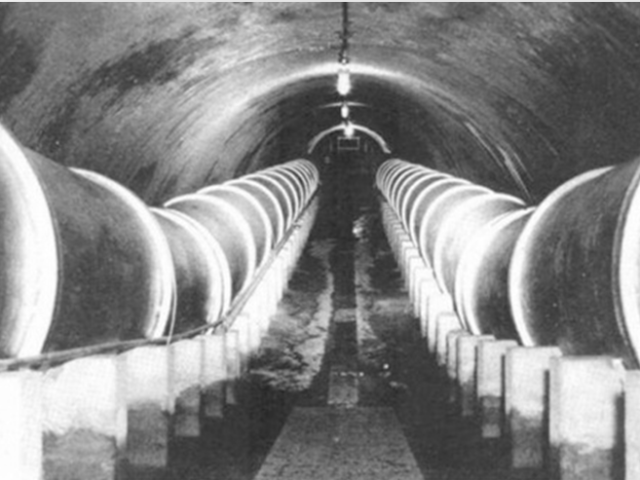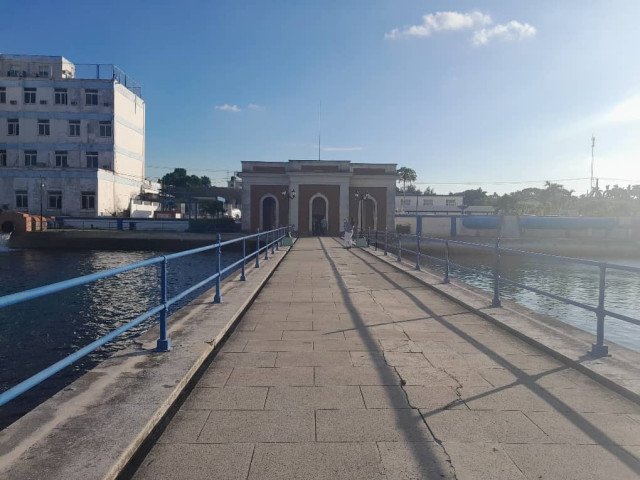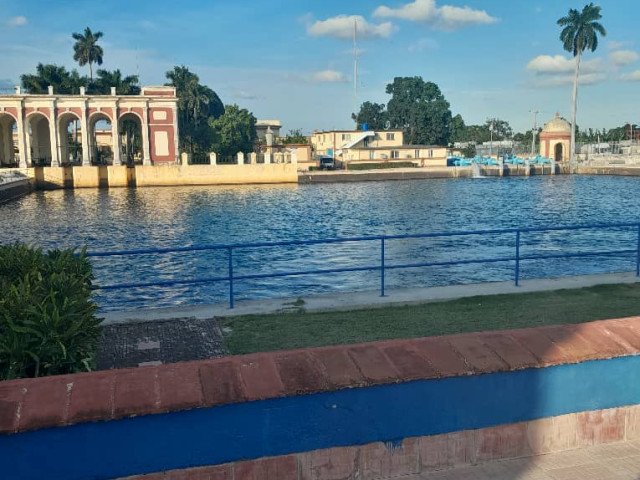The National Institute of Hydraulic Resources (INRH) is immersed in a historical research project entitled "Memories of Water in Cuba", which in turn has a permanent working group of the same name. The working group was created in November 2022 and pursues the following objectives:
- To carry out research on the development of Hydraulics in Cuba, to serve as support for the National Institute of Hydraulic Resources, State entities and the Government of the Republic of Cuba and non-governmental entities in the development of plans and programmes aimed at the preservation, awareness and dissemination of land water management throughout history in the formation and development of Cuban society.
- To disseminate the legacy of the country's treasured water heritage.
- To disseminate the different forms of water management throughout history, in order to contribute to a culture of efficient and productive use.
- Identify the major hydraulic engineering works that have been built in Cuba.
- Describe the different spaces linked to water management in Havana and their relationship with the development of the city.
- To mobilise institutions and citizens with communication campaigns to promote a "new water culture".
The project has three strategic lines of work: The Water Routes, the Initiative to incorporate the Albear Aqueduct in the Global Network of Water Museums (WAMU-NET) and the Hydraulic Memories.
The Albear Aqueduct is an impressive engineering work built in Havana in the second half of the 19th century, named after the distinguished engineer Don Francisco de Albear y Fernández de Lara who conceived it. It is considered one of the most outstanding works of its time in the world and currently provides between 12-15% of the water supplied to Havana, being a work of vital importance for the supply of water to the city.
Due to its majesty as a work of engineering, it is considered one of the seven wonders of civil engineering in Cuba and has the status of National Monument.
This work owes its name to the distinguished engineer Don Francisco de Albear y Fernández de Lara, who was commissioned by the Captain General of the island to design an aqueduct that would provide a solution for the adequate supply of San Cristóbal de La Habana, which had a population of 100,000 inhabitants in the middle of the 19th century. Until that time, the city depended mainly on the water supply from the Zanja Real (Royal Ditch), which was an uncovered canal approximately 10 km long, which as the population grew, the quality of the water became poorer, causing illnesses, and later from the Fernando VII Aqueduct, concluded in 1835, which also failed to satisfy the growing demand for water from the inhabitants.
Nevertheless, in 1855, the Captain of Engineers Don Francisco de Albear y Fernández de Lara presented a report on the Project for the conduction of water from the springs of Vento to San Cristóbal de La Habana, projecting an aqueduct system that included the collection of water from the springs, the layout of the canal to the deposits of Palatino, the possibilities of using the previous aqueducts and the calculations of the water supply for the city.
Its impressive state of conservation of the work, as well as the masterly engineering solutions provided in this project, the integrity with the environment, even in the smallest details, explains whys it was visited since ancient times by many engineering figures, as well as by politicians, scientists, students and children, especially in guided visits.
Visiting the Museum of the Legendary Albear Aqueduc, you can live a unique experience, starting at the fountain known as the Taza de Vento, observe the more than 400 springs, walk along the Almendares Siphon, visit the 24 cylindrical towers and the 3 square towers along the 9.6 kilometres of the Canal and end at the tanks known as Tanques de Palatino.
Considering all these aspects and the need to promote a new water culture, starting from an aqueduct system in operation for more than 130 years, we propose to increase and further direct the activities that are developed in it by creating a water museum that includes knowledge of the history of the aqueduct, as well as activities to promote water culture. Among the most significant activities carried out at the site in recent years are the visits of delegations from different countries, as well as engineers and students of hydraulics, water culture promotion activities are carried out, which include a tour of the site and then a camping on site developing games and educational classes to promote water culture and hygiene, being very well received by students, circles of interest and the Children's Friendly Water project.
A Brief history of the Albear Aqueduct
The Albear Aqueduct is declared a National Monument, granted by the National Monuments Commission of the National Council of Cultural Heritage attached to the Ministry of Culture. It is an impressive work of engineering built in Havana between 1858-1893. It is made up of the collection works in the Vento springs, the Tunnel under the Almendares River, the Vento Canal, the Arcada and the Palatino Deposits and the distribution system. It was founded with the objective of solving the water supply problems that existed in the city.
In the middle of the 19th century, Havana had the Royal Ditch and the Aqueduct of Fernando VII, as well as 895 cisterns and 2,976 wells, according to the statistics of 1846, but all those resources were not enough to adequately satisfy, neither in quantity nor in quality, the growing needs of a population that already amounted to about 100,000 inhabitants.
Hence, on November 25, 1855, the infantry colonel and commander of the Royal Corps of Engineers, Francisco de Albear y Fernández de Lara, submitted to Captain General José Gutiérrez de la Concha a transcendental document, titled: “Memory on the Project of conveyance of the waters of the Vento springs to Havana.” The project proposed the need to take water from the groundwater table through wells and convey it from the Vento springs. Albear dedicated many years of his life to these works, but he was not able to see it completed, because he was surprised by his death at the end of 1887.This notable engineering work won a Gold Medal at the Paris Universal Exhibition of 1878, where it was evaluated as a masterpiece of 19th century engineering. In 1997 she was selected by the National Union of Architects and Construction Engineers of Cuba (UNAICC), as one of the Seven Wonders of Civil Engineering. Together with the old Zanja Real and the Fernando VII Aqueduct, it is part of the Historic Aqueduct System of Havana. The UNESCO Global Network of Water Museums (WAMU-NET) made its membership official in 2023, being the first in the Caribbean region to belong to that association. More than 130 years after its construction, the Albear Aqueduct continues to be pristine, carrying water only by gravity to the population of the Cuban capital.
The image of the engineer Francisco de Albear is consolidated by analyzing his performance as a precursor, with a degree of updating that placed him at the level of the most advanced knowledge of his time, and with an engineering approach characterized by a coherent comprehensiveness, since it harmoniously encompassed the rigor of the project with the ecological, aesthetic, economic, ethical and health aspects, demonstrating his mastery as a builder.
When assessing the merits of such a transcendental engineering work, which in honor of its creator was renamed the Albear Aqueduct, starting in 1893, it is essential and very illuminating to refer to the own words of the colonel of engineers Joaquín Ruiz, when he expressed:
“The choice of the intake point, the analysis of the water, the calculation of the necessary consumption, the lighting and gauging of the springs, an ingenious and difficult operation; the no less delicate nature of its capture; its collection in a common space; the preservation of water from all harmful influences, and the erection of works that defend it from all mixture or confusion with murky origins; then driving them over long distances in hygienic conditions through all kinds of obstacles, crossing riverbeds, streams, roads, boulevards, hills and trenches to the vast tank that stores and rests them, ensuring uniformity and constancy in consumption. ; its distribution later scientifically studied to spread the water by subdividing and taking advantage at the same time of the force that drives it from its departure; All this... gives rise to studies in chemistry, public hygiene, statistics, geology, construction mechanics and hydraulics, and many other branches of knowledge.”
(extract from: Ruíz, Joaquín (1915-1916): "El Brigadier Albear. Necrología", en Anales de la Academia de Ciencias Médicas, Físicas y Naturales de La Habana, t. 52, Habana, p. 851)
WATER ROUTES
The water routes, promoted by the National Institute of Hydraulic Resources (INRH), are a set of itineraries that run through the Historical Center of Havana, both intramural and extramural. They are part of the historical-social research project “Memories of water in Cuba” organized and conducted by the INRH. Their objectives are to disseminate and promote the legacy of Hydraulic Heritage, disseminate the forms of water management throughout history, as well as contribute to the rational and efficient use of this natural resource.
In the Cuban capital, 2 routes have been successfully developed:
1) The Water Route in the Historic Center of Old Havana
It arose during the closing of the 22nd edition of the summer project Routes and Walks to Discover as a Family, organized by the Office of the Historian of the City of Havana (OHCH), and receiving advice from said institution. Under the accompaniment of the Intergovernmental Hydrological Program (IHP) of UNESCO and other scientific and educational entities; It is framed within the scope outlined in the Comprehensive Hydraulic Development Program until 2030, in the UNESCO Global Network of Water Museums (WAMU-NET), launched in 2017, and supported by the IHP to promote the Sustainable Development Goals (SDGs), in particular number 6 “Clean water and sanitation”. It is located in one of the areas of the Bahía de La Habana hydrographic basin and includes 17 sites that have heritage values.
2) The Water Route in the Albear Aqueduct
The route of this route takes place in the Albear Aqueduct, an impressive work built in Havana between 1858-1893. Together with the Zanja Real and the Fernando VII Aqueduct, it is part of the Historic Aqueduct System of Havana. It is made up of the collection works in the Vento springs, the tunnel under the Almendares river, the Vento canal, the Palatino deposits and the distribution system.
The Albear Aqueduct, declared a National Monument, is one of the Seven Wonders of Civil Engineering in Cuba. It was the first system in the country that used water from the groundwater table through wells. The UNESCO Global Network of Water Museums (WAMU-NET) made its membership official in 2023, being the first in the Caribbean region to belong to that association. More than 130 years after its construction, the Albear Aqueduct continues to bring water only by gravity to the population of the Cuban capital.
The development of these two initiatives will serve to remember the 130th anniversary of the creation of the Albear Aqueduct and the 103rd anniversary of the birth of Commander Faustino Pérez Hernández, first president of the INRH; the 61st anniversary of the creation of the INRH, the 41st anniversary of the declaration of the Historic Center of Havana and its system of fortifications as a World Heritage Site by UNESCO; the imprint of the eternal Historian Eusebio Leal Spengler, and significant dates such as World Water Day, International Museum Day and World Environment Day.
For further information about INRH, please click the following link: www.hidro.gob.cu
























